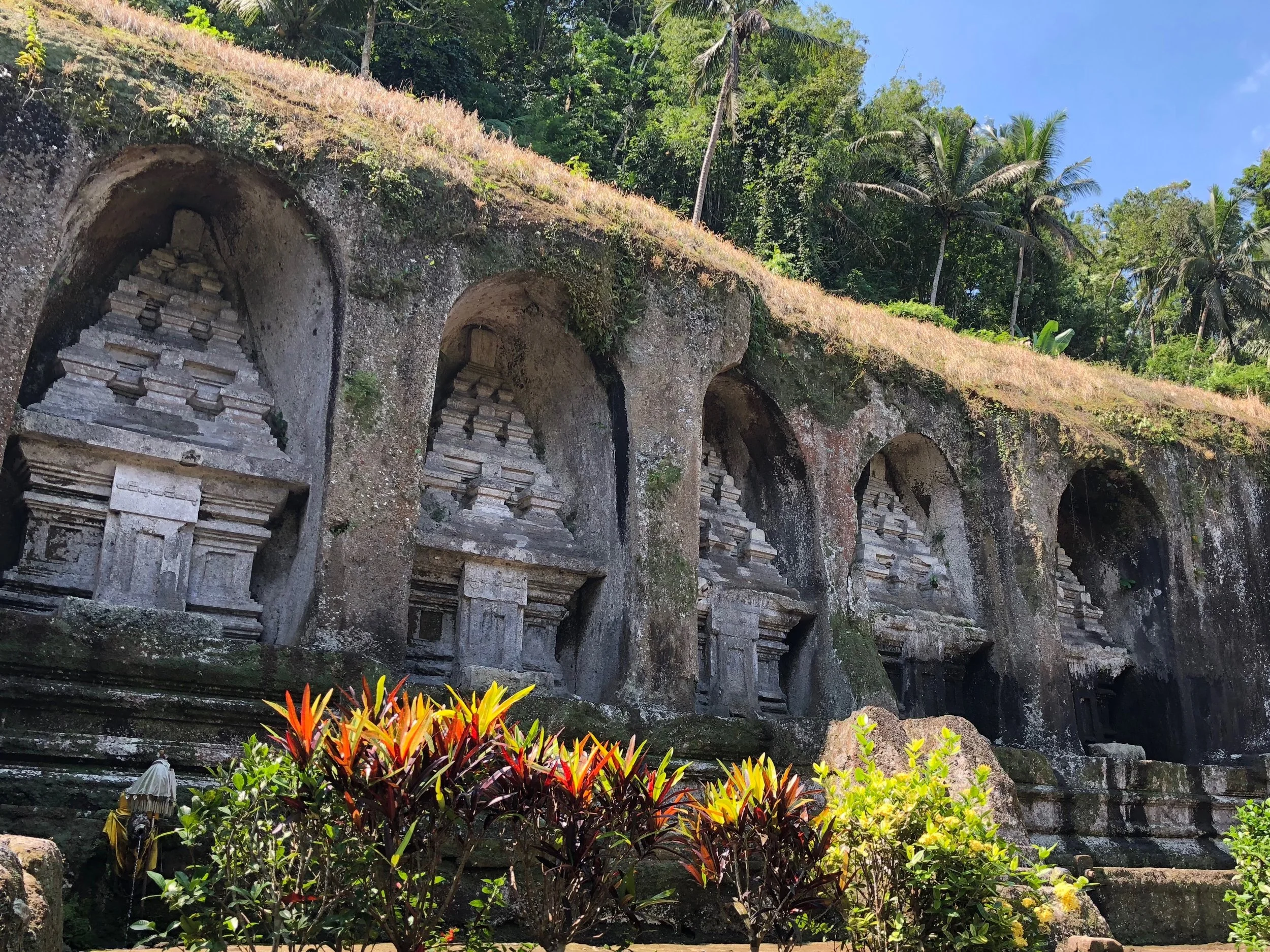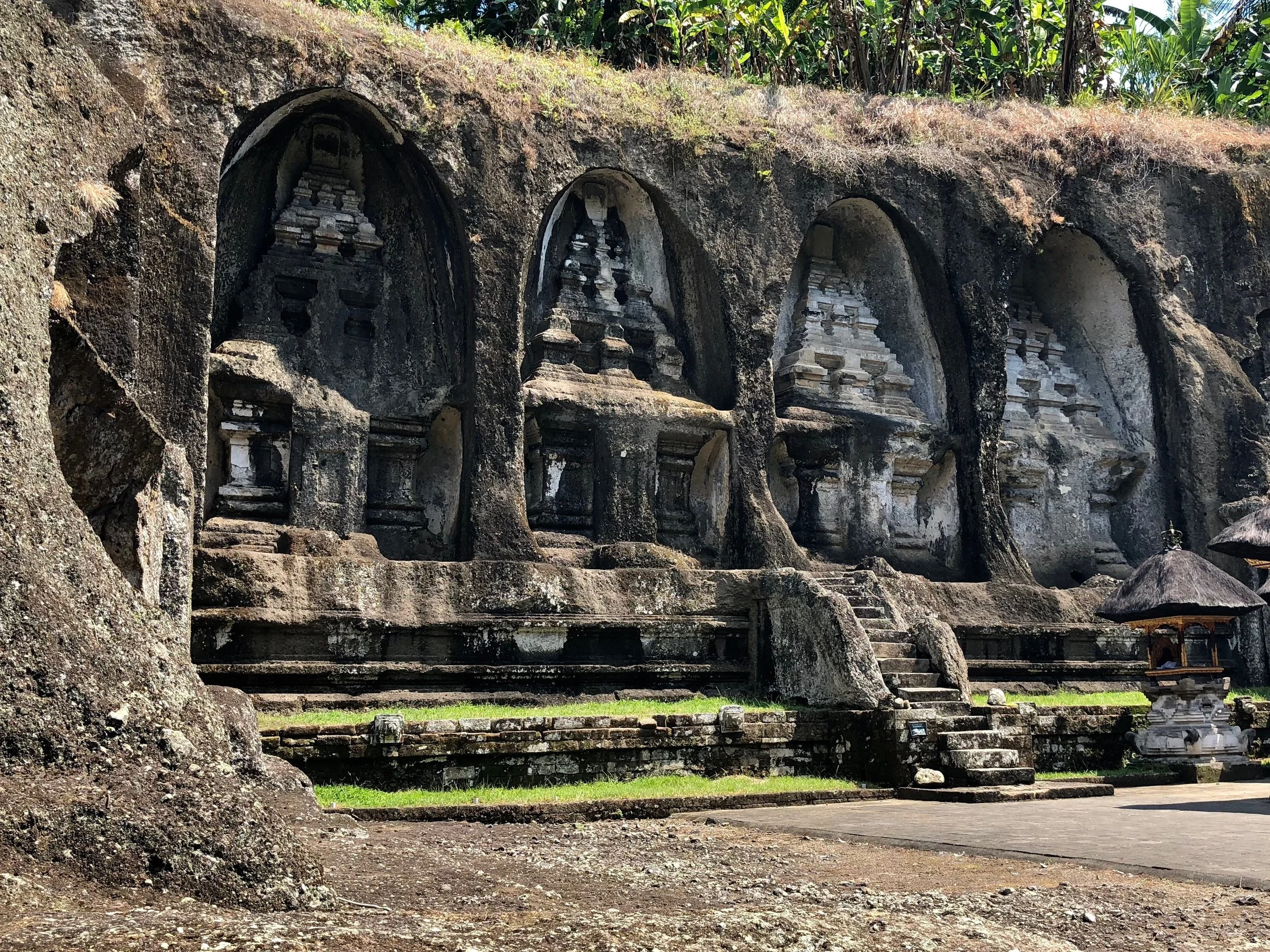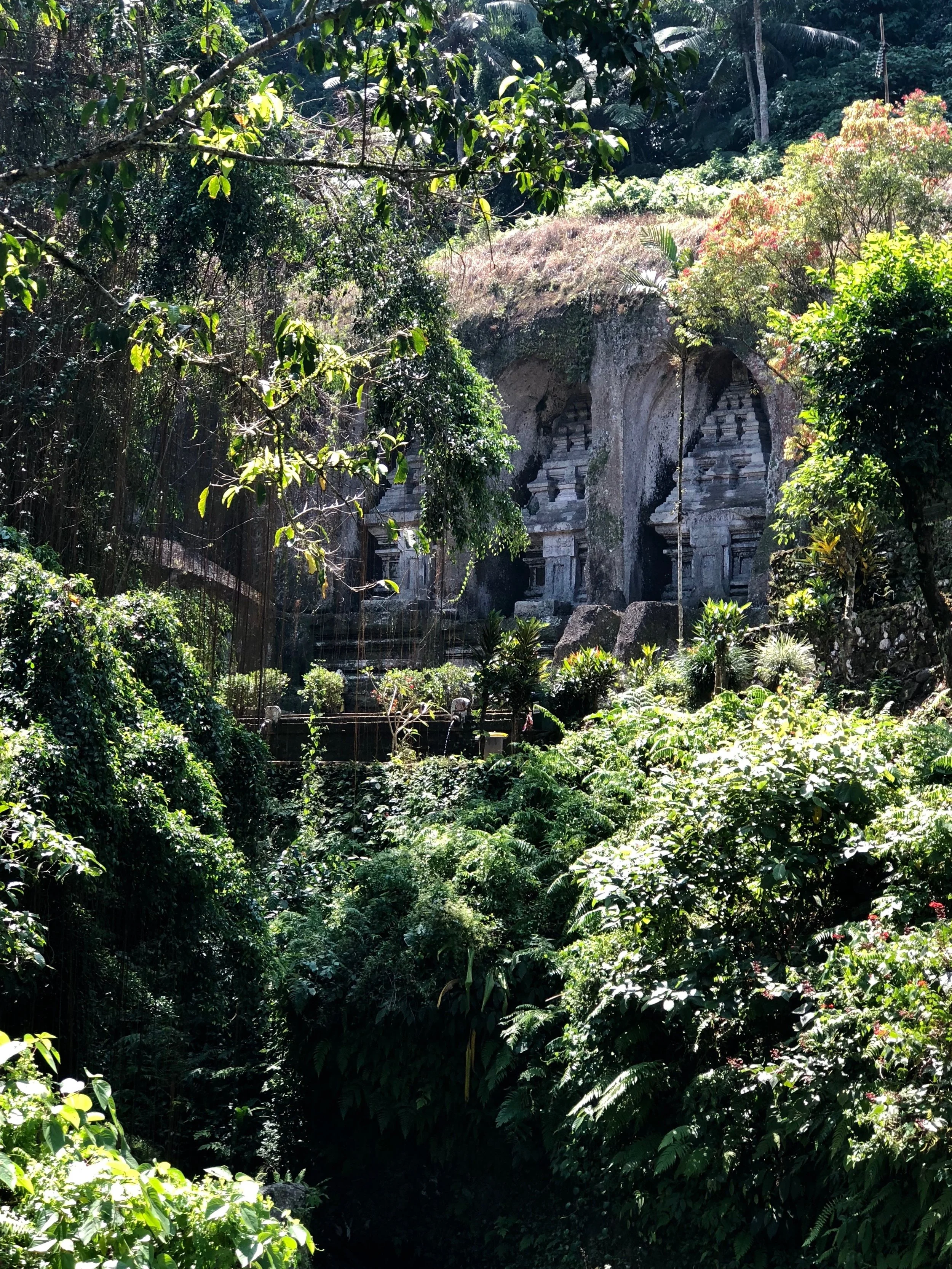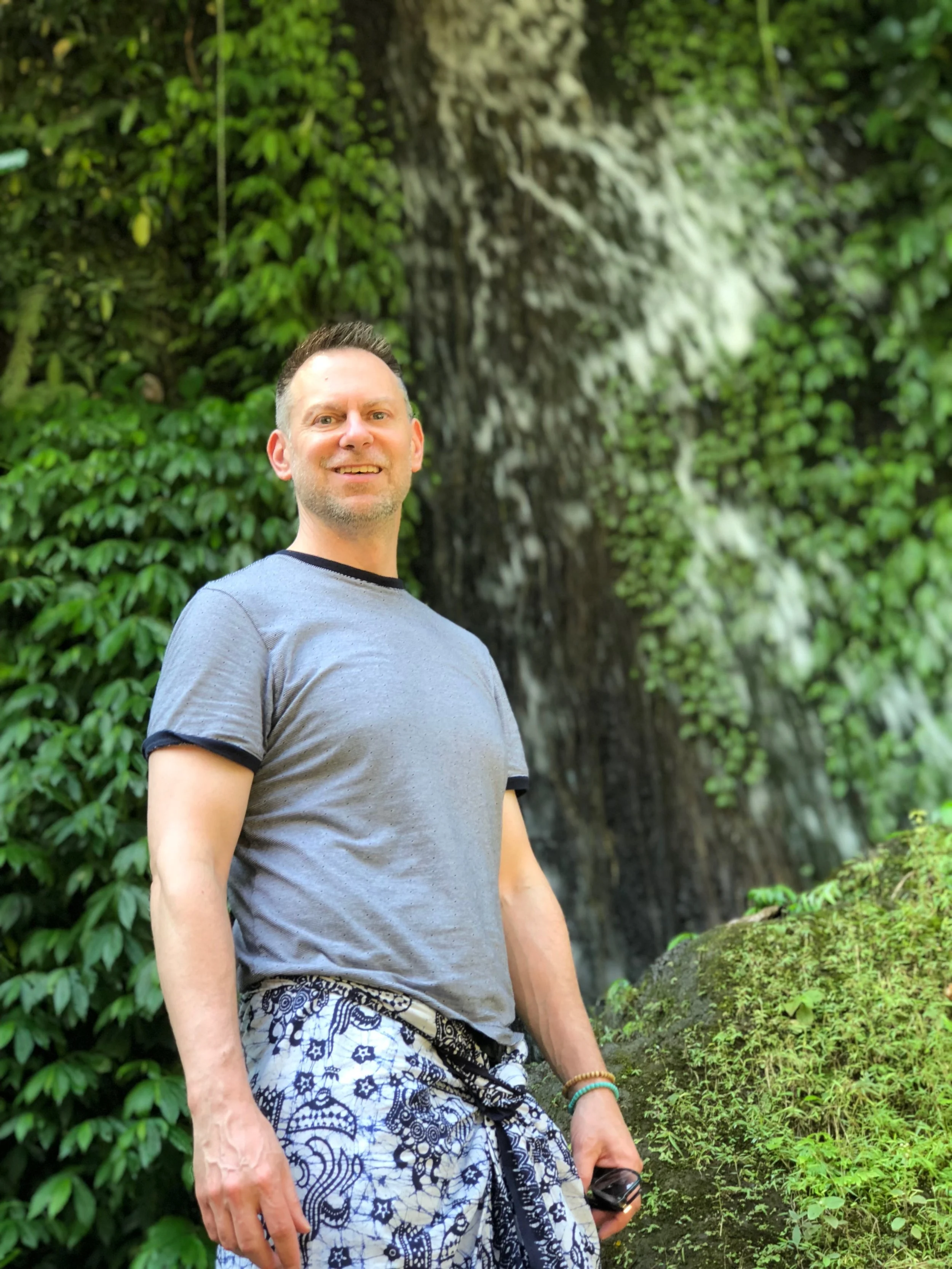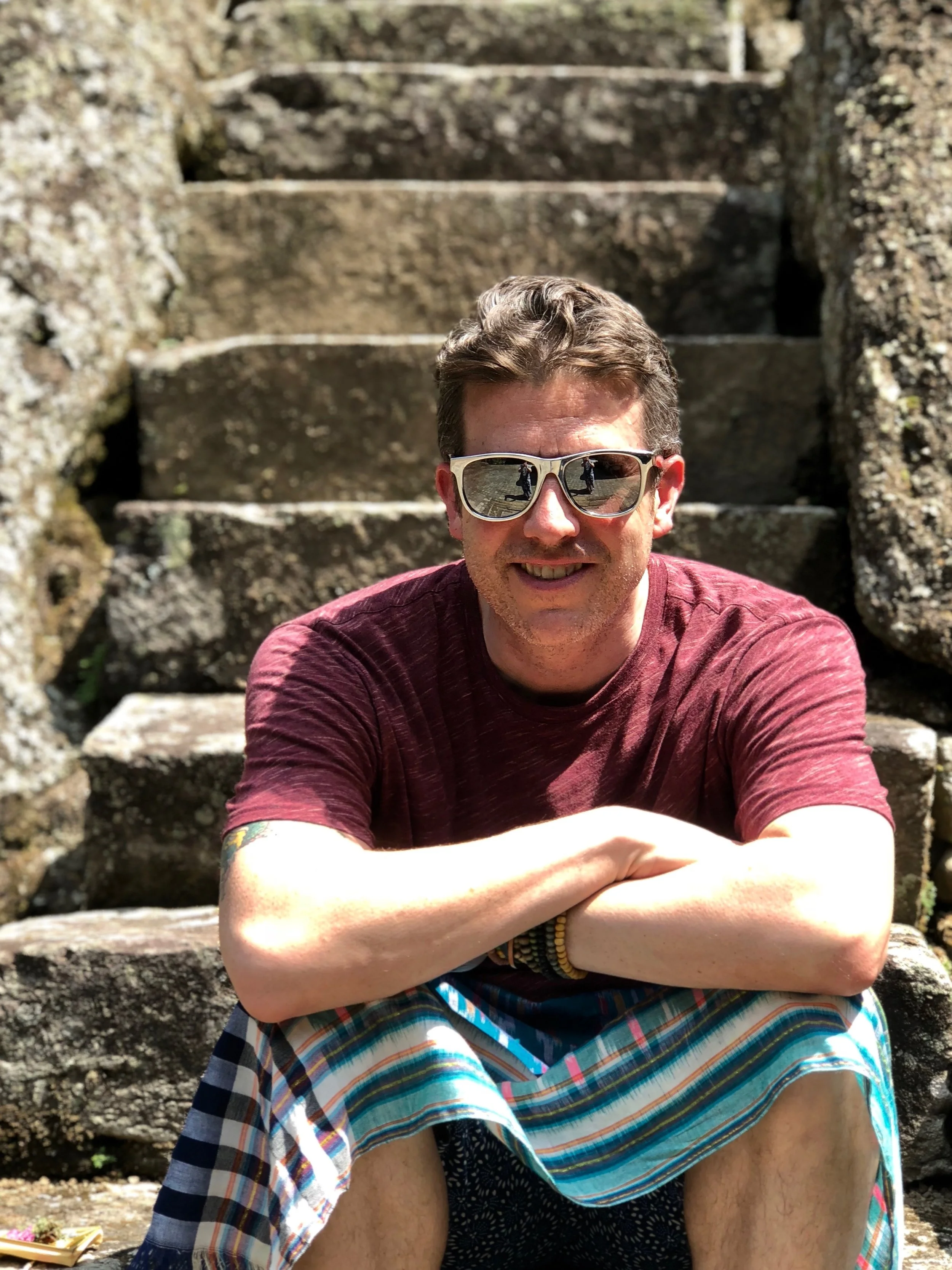Make the long trek down to the enigmatic “Valley of the Kings” in Tampaksiring on Bali.
When the king died, his wives were ceremoniously killed — and they were all honored with these memorial shrines
After paying the admission fee of 15,000 rupiah (just $1), Wally and I made our way down the hundreds of steep stone steps leading to the 11th century funerary complex of Gunung Kawi. Its name literally translates as Mountain of the Poets, taken from an ancient literary language used by poets and Brahmin high priests.
When we finally arrived at the the river valley below, after a long walk through the sweltering heat, we entered a lush, green oasis — the colors all the more vibrant against the contrast of the gray basalt cliffs.
“A mighty giant warrior named Kebo Iwa is said to have carved out the entire group of shrines in one night with his fingernails. ”
A typical split gate found at many Balinese temples
The 10 memorials were created for royal family members — and their concubines
The complex consists of 10 slender 23-foot-high memorials shaped like candi, ancient burial towers, which have been carved directly into the igneous rock face. Each temple façade is framed within an arched niche: Four stand on the west side and five on the east, separated by the sacred Pakerisan River.
An interesting Balinese folktale attributes the entire group to a mighty, mythical giant warrior named Kebo Iwa, who, according to legend, carved out the entire group in one night with his fingernails. He’s also credited with the creative of the monster mouth cave of Goa Gajah. In reality, these magnificent structures were sculpted from the top down by hand, most likely using only pickaxes, hammers and chisels.
The shrines were carved right into the cliffs
Candi Land
Although the monuments remain a mystery, it has been speculated that they were built to honor King Anak Wungsu, who ruled in Tampaksiring from 1049 to 1077. An inscription found above the central shrine on the east side mentions that the king, whose name isn’t given, made a temple here. The additional shrines were for his favorite wives, who would have ceremonially committed suicide after his death.
Another theory amongst historians is that the candi were commissioned by Anak Wungsu to honor his father, King Udayana, his mother, Queen Mahendradatta, and his brothers Airlangga and Marakata (along with himself), with the remaining four dedicated to his concubines.
The other side of the river can be seen through curtains of banyan roots
When so little is known for certain, anything is possible. In any event, the candi at Gunung Kawi resemble the free-standing shrines of East Java and were built as an abode for the souls of deceased royalty. Their residences have steps leading to false doors. To the right of the monuments are five cells carved into the rock, where the caretakers formerly stayed.
The caretakers didn’t get the best digs — they lived in these caves
Eye Candi
Wally and I followed the stone bridge across the Pakerisan River, which gurgles and flows through the center of the complex. The five main funerary monuments remained partly obscured by a copse of trees and gradually came into full view.
A river separates the two sides of Gunung Kawi
The Pakerisan River is considered sacred on Bali
The location felt like the setting for an Indiana Jones adventure. Whatever its origin, I found myself gazing up at the five rock-hewn memorial shrines before us, taken in by the mystical atmosphere of ancient legends and long-lost tales of forgotten Balinese kings.
Behind Duke is the waterfall that’s across the river at one end of the complex
Wally takes a break on all those damn stairs!
What was not so magnificent was the brutal climb back up to the parking lot. Suffice to say, that it would not be accessible to anyone who is mobility impaired.
Because this is a sacred site, be sure to bring a sarong. If you don’t have one, they’re available for rent at the ticket kiosk. –Duke
Candi Gunung Kawi
Banjar Penaka
Tampaksiring
Gianyar, Bali 80552
Indonesia

